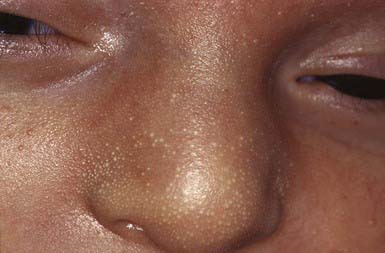Chapter 639 Diseases of the Neonate
Sebaceous Hyperplasia
Minute, profuse, yellow-white papules are frequently found on the forehead, nose, upper lip, and cheeks of a term infant; they represent hyperplastic sebaceous glands (Fig. 639-1). These tiny papules diminish gradually in size and disappear entirely within the first few weeks of life.




